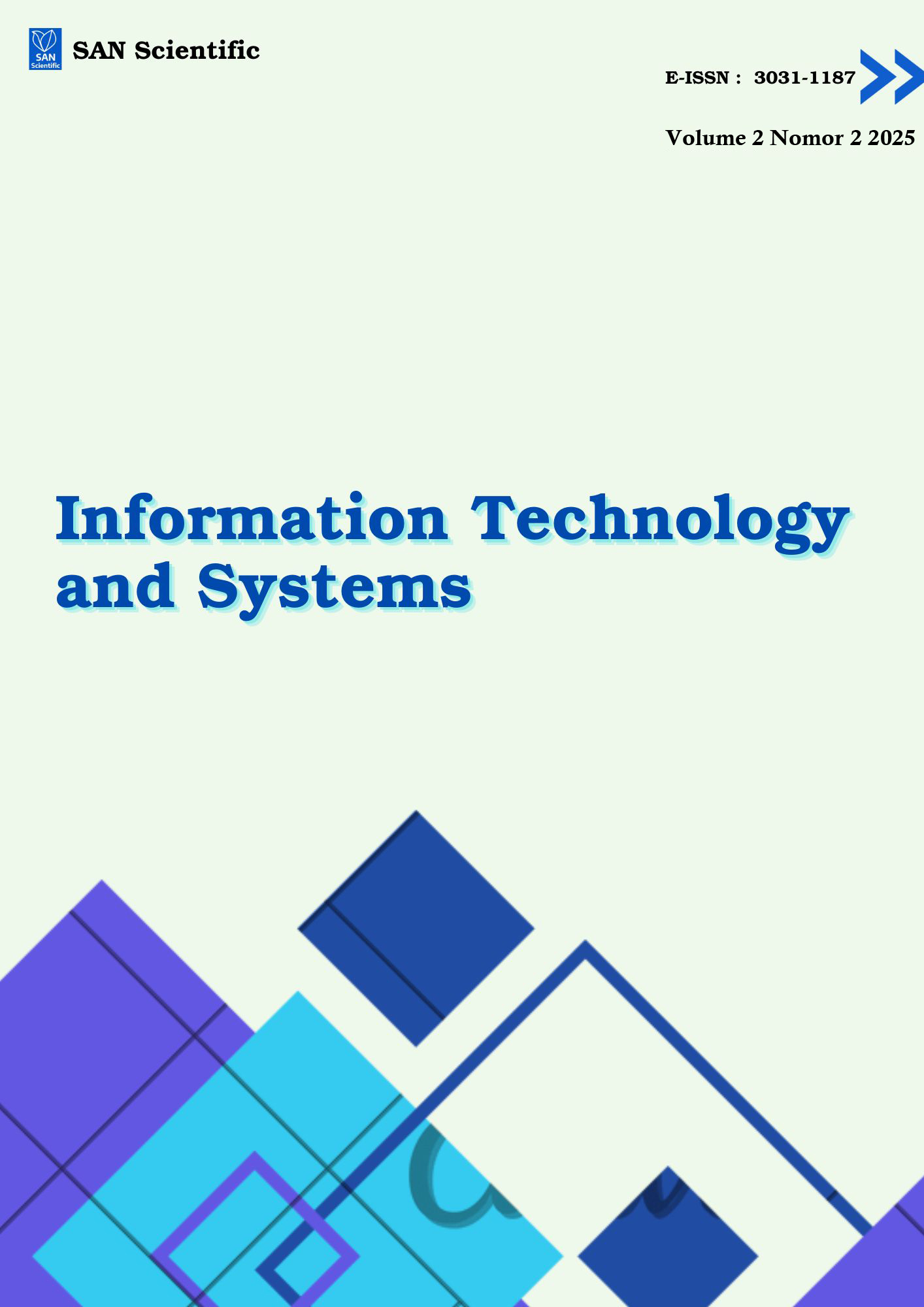Analysis of the Influence of Technology Acceptance Model (TAM) Variables on User Satisfaction of the InDriver Application
DOI:
https://doi.org/10.58777/its.v2i2.308Keywords:
InDriver, Perception of Benefits, Perception of Ease, Technology Acceptance Model, User SatisfactionAbstract
This study aims to analyze the influence of variables within the Technology Acceptance Model (TAM) framework, namely Perceived Usefulness (PU), Perceived Ease of Use (PEOU), Attitude Toward Using (ATU), and Behavioral Intention to Use (BI), on the satisfaction of users of the online transportation application InDriver. TAM is a commonly used model in evaluating technology acceptance and is utilized in this research to measure the extent to which users' perceptions of the ease and benefits of using the application affect their satisfaction. Data was collected through a quantitative survey using a questionnaire with 150 respondents who are active InDriver users. The analysis method used is multiple linear regression to test the simultaneous and partial effects of each TAM variable on user satisfaction. The results show that PU and PEOU have a significant effect on attitude and intention to use, which in turn has a positive effect on user satisfaction. This finding indicates that the acceptance of technology directly affects user satisfaction in the use of digital transportation services. This research contributes to application developers and service providers in understanding the factors that influence technology-based user satisfaction.
References
Afifah, H., Ibrahim, T., & Arifudin, O. (2024). Implementasi Technology Acceptance Model (TAM) Pada Penerimaan Aplikasi Sistem Manajemen Pendidikan Di Lingkungan Madrasah. Jurnal Tahsinia, 5(9), 1353–1369. https://doi.org/10.57171/jt.v5i9.665
Akbar, M. R., Wibowo, A., Pranata, R., & Setiabudiawan, B. (2021). Low serum 25-hydroxyvitamin D (vitamin D) level is associated with susceptibility to COVID-19, severity, and mortality: a systematic review and meta-analysis. Frontiers in Nutrition, 8, 660420.
Al-Suqri, M. N., & Al-Kharusi, R. M. (2015). Ajzen and Fishbein’s theory of reasoned action (TRA)(1980). In Information seeking behavior and technology adoption: Theories and trends (pp. 188–204). IGI Global.
Astuti, E. D., & Sintesa, N. (2020). Kualitas Pelayanan terhadap Kepuasan Pelanggan Pada Aplikasi Pesan Antar Makanan. Kompak: Jurnal Ilmiah Komputerisasi Akuntansi, 13(2), 154–158. https://doi.org/10.51903/kompak.v13i2.675
Darjanto, M. S. (2024). PERSEPSI PENGGUNA TERHADAP KELEBIHAN DAN KELEMAHAN INDRIVER DALAM KONTEKS PERSAINGAN TRANSPORTASI ONLINE DI KOTA SURABAYA. Seminar Nasional Ilmu Terapan, 8(1), E10–E10.
Darman, F., Ciptosari, F., & Wadhi, Y. P. H. (2024). Analisis customer journey pengguna Noabike: Strategi pemasaran digital dan transportasi berkelanjutan di Labuan Bajo. Jurnal Manajemen Pemasaran, 18(2), 107–114. https://doi.org/10.9744/pemasaran.18.2.107-114
Davis, F. D. (1989). Perceived Usefulness, Perceived Ease of Use, and User Acceptance of Information Technology. MIS Quarterly.
Elan, M. S., & Muslikh, A. R. (2024). Analisis Kepuasaan Pengguna Aplikasi GRAB Sebagai Transportasi Online Dengan Metode TAM. J-INTECH (Journal of Information and Technology), 12(02), 248–259. https://doi.org/10.32664/j-intech.v12i02.1304
Fadilla, F. (2024). Pengaruh Promotion, Service Quality, and Customer Experience Terhadap Loyalitas Nasabah Pada Bank Syariah Indonesia Cabang Medan Pulo Brayan. Jurnal Ilmiah Ekonomi Islam, 10(2), 1514–1523. https://doi.org/10.29040/jiei.v10i2.13315
Fitriana, R., Safitri, S. T., & Wiguna, C. (2022). Faktor penentu penerimaan teknologi sistem pembayaran tagihan bulanan melalui e-marketplace menggunakan metode combined-theory of planned behaviour-technology acceptance model (c-tpb-tam). Network Engineering Research Operation, 7(1), 53–68.
Indiarto, R., Pratama, A. W., Sari, T. I., & Theodora, H. C. (2020). Food irradiation technology: A review of the uses and their capabilities. Int. J. Eng. Trends Technol, 68(12), 91–98. doi:10.14445/22315381/IJETT-V68I12P216
Nurvitasari, E., & Dwijayanti, R. (2022). Pengaruh Persepsi Kemudahan, Fitur Layanan Dan Kepercayaan Terhadap Minat Menggunakan Aplikasi Grab (Studi Pada Pengguna Aplikasi Grab Fitur Grabfood). Jurnal Pendidikan Tata Niaga (JPTN), 10(1), 1472–1481. https://doi.org/10.26740/jptn.v10n1.p1472-1481
Salamah, I., & Kusumanto, R. D. (2017). Faktor-Faktor Yang Mempengaruhi Minat Pemanfaatan Sistem Informasi Pada Dosen Jurusan Teknik Elektro POLSRI. Jurnal Digit: Digital of Information Technology, 5(2). https://doi.org/10.51920/jd.v5i2.45
Sugihartono, T., & Putra, R. R. C. (2020). Analisis Kepuasan Pengguna Menggunakan Technology Acceptance Model pada Sistem Pelayanan Publik. Satin-Sains Dan Teknologi Informasi, 6(2), 97–105. https://doi.org/10.33372/stn.v6i2.651
Wulandari, M. T. (2024). Kepuasan Penggunaan Media Sosial dengan Pedendekatan Technology Acceptance Model (TAM) Pada Mahasiswa di Universitas Islam Indonesia. Universitas Islam Indonesia.
Downloads
Published
Issue
Section
Copyright (c) 2025 Muhammad Fandu Pratama

This work is licensed under a CC Attribution-ShareAlike 4.0
 Views: 55
|
Views: 55
|
 Downloaded: 39
Downloaded: 39









